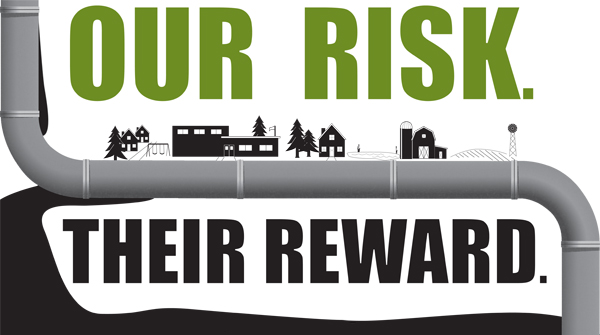You can change the environment conversation in Canada. Chip in to rabble’s donation drive today!
We knew the climate impacts of TransCanada’s Energy East pipe would be huge.
After all, it more then double the capacity of Enbridge’s Northern Gateway pipeline and almost twice the capacity of Keystone XL and it will no doubt carry carbon-intensive tar sands crude. It would be the single largest oil pipeline in North America.
Thanks to a newly released report by Pembina Institute, we can now put some numbers to this claim.
The report found the upstream emissions of the pipeline project would contribute 30 to 32 million tonnes of climate pollution annually. To put this in perspective:
– This is the equivalent of doubling the annual emissions of all the cars in Ontario;
– It cancels out the emissions stopped by Ontario’s phase out of coal and represents close to 20 per cent of all greenhouse gas emissions generated in Ontario;
– It is more climate pollution then any single Atlantic province generates. (Source)
What I find incredibly damning is that allowing this project to move forward represents a 34 to 39 per cent increase in 2012 tar sands production levels. At a time when downstream communities such as the Athabasca Fort Chipewyan and Beaver Lake Cree nations are clearly opposed to any expansion. Even some conservatives have come out against expansion. Even Peter Lougheed, former conservative premier of Alberta, demanded a moratorium on tar sands development years ago.
And Pembina’s report — as helpful as it absolutely is — doesn’t paint the full picture when it comes to Energy East’s climate shadow. In focusing solely on the upstream emissions from producing tar sands crude, they are missing the additional emissions associated with refining and the final use of this crude.
You’d think this would be a no-brainer. Even the conservative International Energy Agencyrecognizes that two-thirds of global oil reserves needs to stay in the ground if we are going to keep warming below 2 degrees and prevent catastrophic climate change. Being more 3.2-4.5 times carbon intensive then conventional oil, tar sands should be high on the list of what shouldn’t be pursued. Instead, we have no federal oil and gas regulations and at least two governments hell-bent on ripping gooey thick bitumen out of the ground.
If you find this frustrating, take a few minutes to check out Pembina’s new report and make a couple of calls to your municipal, provincial and federal representatives letting them know this isn’t acceptable.
The good news is there are significant barriers to this energy superpower dream on steroids. Downstream First Nations including the Athabasca Fort Chipewyan First Nation and Beaver Lake Cree Nation have a number of legal efforts underway that stand to stem this tide. The brave and outspoken voices of people like Eriel Deranger, Crystal Lameman, Melina Laboucan Massimo and Bill McKibben alongside landowners and Indigenous communities along tar sand pipeline routes have inspired a movement to stop the pipeline infrastructure. It is a movement of people that understand that this infrastructure not only poses serious threat of a diluted bitumen spill along the route, but is critical to industry plans for a fivefold tar sands expansion.
The growing movement against Energy East is no exception. I’ve been privileged enough to work with a number of groups opposing this pipeline and have watched opposition blossom over the past several months and have no doubt this will grow.
Visit www.noenergyeast.ca for campaign updates.
Don’t forget to chip in to keep stories like these coming!
Image: Council of Canadians



